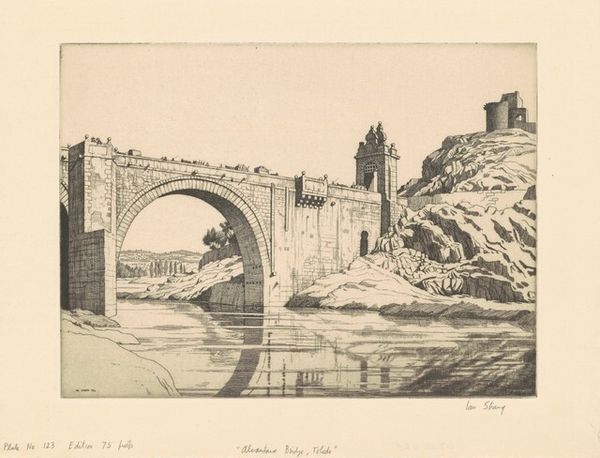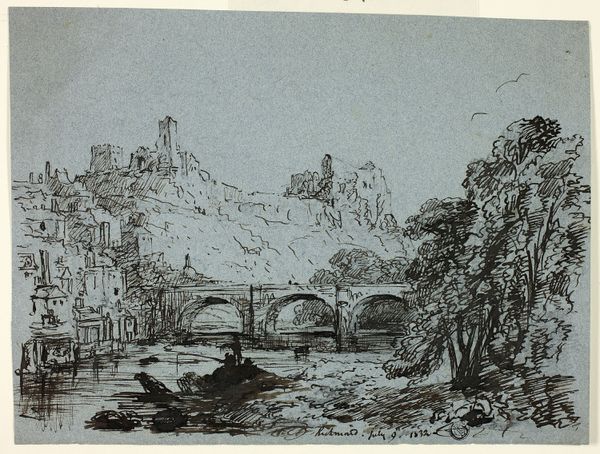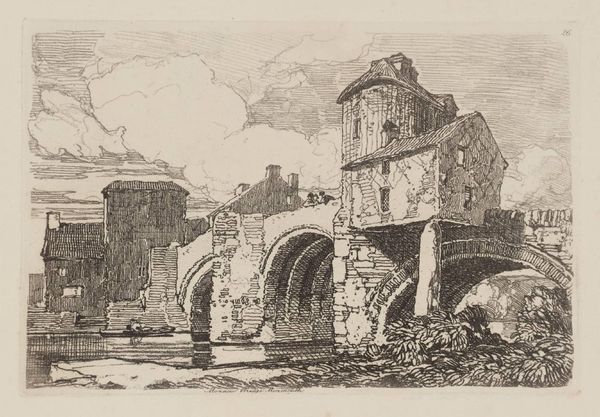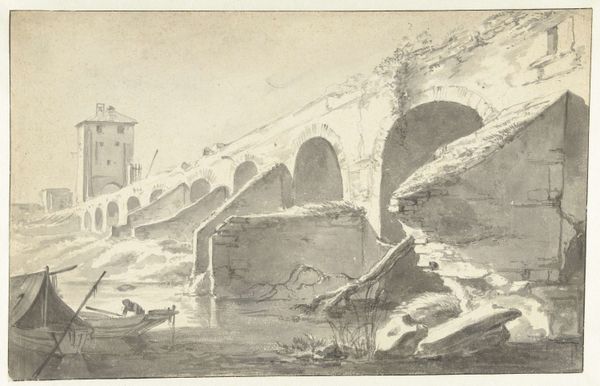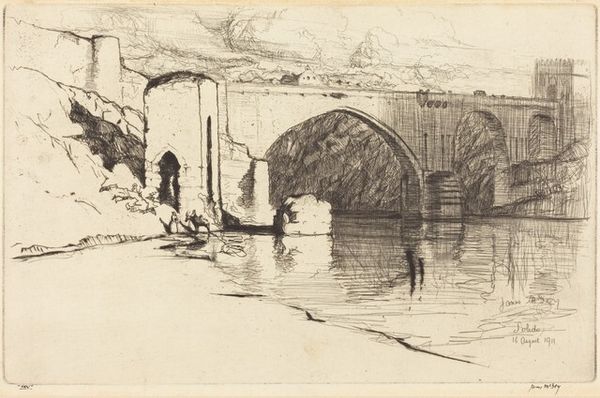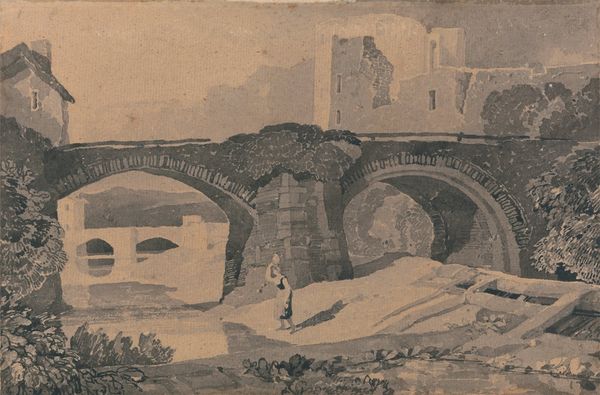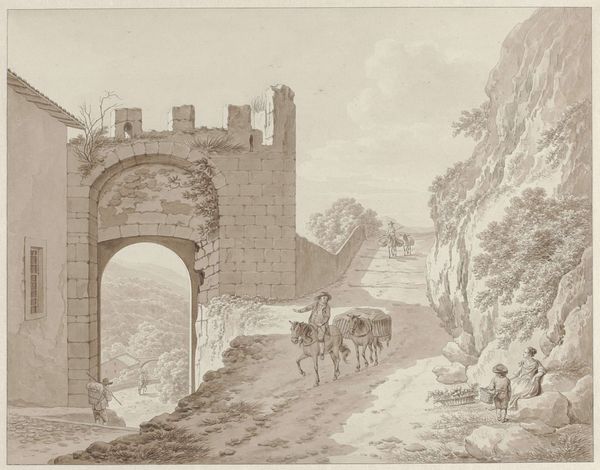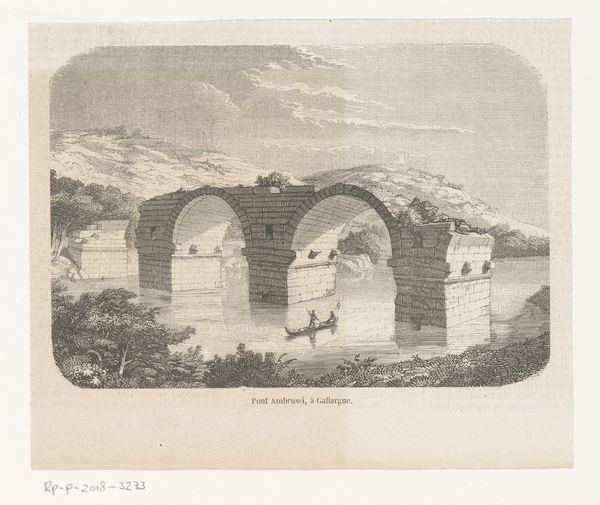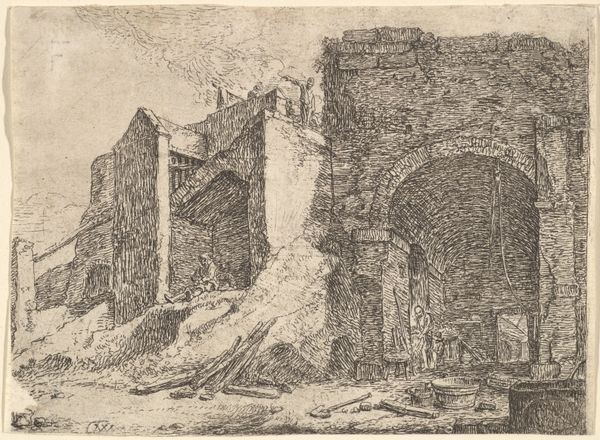
print, etching
# print
#
etching
#
landscape
#
realism
Copyright: National Gallery of Art: CC0 1.0
Curator: Immediately, there’s a weight and permanence that emanates from this print—something about the heavy, stone architecture juxtaposed with what feels like a timeless, serene scene. Editor: This etching, created in 1933 by Earl Stetson Crawford, is titled "Bridge at Badalucco, Italy." The realism really comes through in the detailed linework depicting the stone bridge and surrounding landscape. Curator: Yes, the linework, though quite delicate in execution, certainly gives the entire image a tactile quality. Look at the bridge itself, anchoring the scene; it seems almost a literal representation of connection and continuity through time. Consider how bridges function not only practically, but also psychologically—they’re transitions, thresholds… Editor: Exactly, and it’s also striking how the structure dominates the pictorial space—the tonal range, from the inky blacks of the central tower to the hazy, distant mountains, leads our eye right back to that architectural mass. I mean, in terms of composition, it's a fairly straightforward perspectival view, but the textures and densities of lines build real form and mass. Curator: It almost has a symbolic weight, then. The bridge could represent not just physical connection but also the enduring presence of the past within the present. See the figure standing near the central support; it introduces an immediate human scale and reinforces how deeply integrated this structure is within daily life. Editor: The choice of etching as a medium only enhances that feeling. Etching allowed for detailed lines but also permitted gradations in tone that yield such depth and atmospheric perspective. One almost feels as if one could reach out and feel the rough-hewn surface of the stonework. It's interesting how a potentially cold subject matter, rendered so formally, evokes a somewhat romantic and quiet atmosphere. Curator: The muted tones certainly contribute. And perhaps there’s a universality here too. The bridge isn’t just a physical structure; it becomes a symbol of cultural resilience and enduring spirit. We are reminded of human endeavors that both literally and figuratively cross divides. Editor: Ultimately, this is about close looking and appreciating Crawford's skillful execution. His understanding of form, texture, and space transforms what could have been a simple landscape study into a surprisingly moving composition. Curator: Indeed, a wonderful example of how art freezes a single moment that allows the viewer to deeply contemplate themes of permanence and passage.
Comments
No comments
Be the first to comment and join the conversation on the ultimate creative platform.
